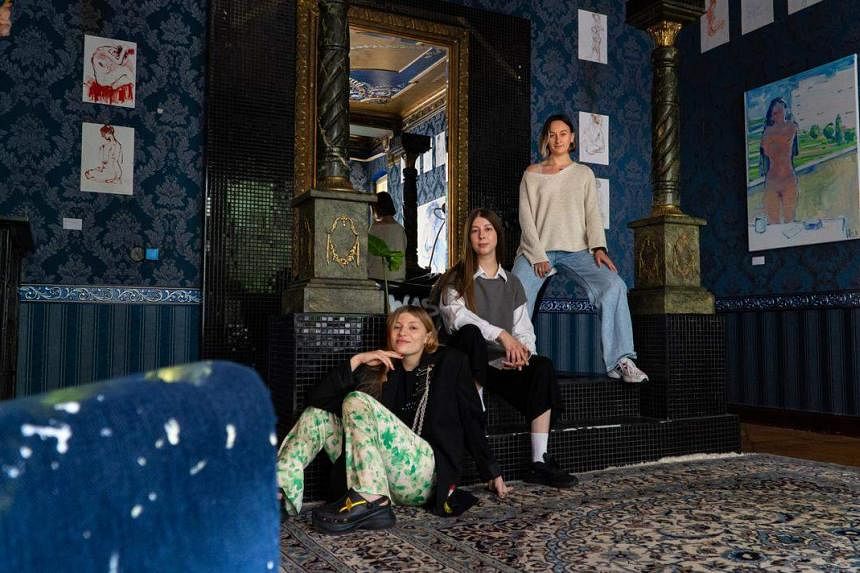BERLIN, Germany – When Russia invaded Ukraine in February, it disrupted the lives of millions, and many had to flee their homes and country. The war also crushed the dreams of many young Ukrainian creatives who were just starting out in their careers.
A fashion designer, dancer and artist who sought refuge in Berlin share how they are rebuilding their lives and rediscovering their passions there.
Artists find work and a home in former brothel
In a one-storey 10-room apartment in west Berlin, a stripper pole and a bathtub in the middle of one room are the only signs this used to be home to a seedy brothel.
Today, the 500 sq m space – lined with baroque wallpaper – is an art gallery and studio. It is also where 20 Ukrainian refugee artists call home.
They belong to the five-month-old Ukrainian Cultural Community, an artist-in-residence programme for creatives in fields such as painting, photography, music and fashion. The initiative, which has its roots in Ukraine, has been in the works since 2020, but came to fruition only because of the Russia-Ukraine war.
Founder and artistic director Anastasia Pasechnik, 23, says: “It’s like a big bridge between people of different cultures who love art. You can come down, have a good time and maybe find a partner for a new project.”
After graduating from Kharkiv National Kotlyarevsky University of Arts in north-eastern Ukraine in 2020, she worked as an events manager, helping struggling artists find work, and came up with the concept for the residency.
It took her almost two years to gather the paperwork required for government funding and schedule a meeting with the mayor of Kharkiv, which was slated to take place on Feb 28. Russia invaded the country four days before and the meeting was cancelled.
“I told myself it was not meant to be. I did volunteer work during the war because I wanted to do something for my country,” she recalls. “A month later, my friend told me to go to Berlin and pursue my dream there.”
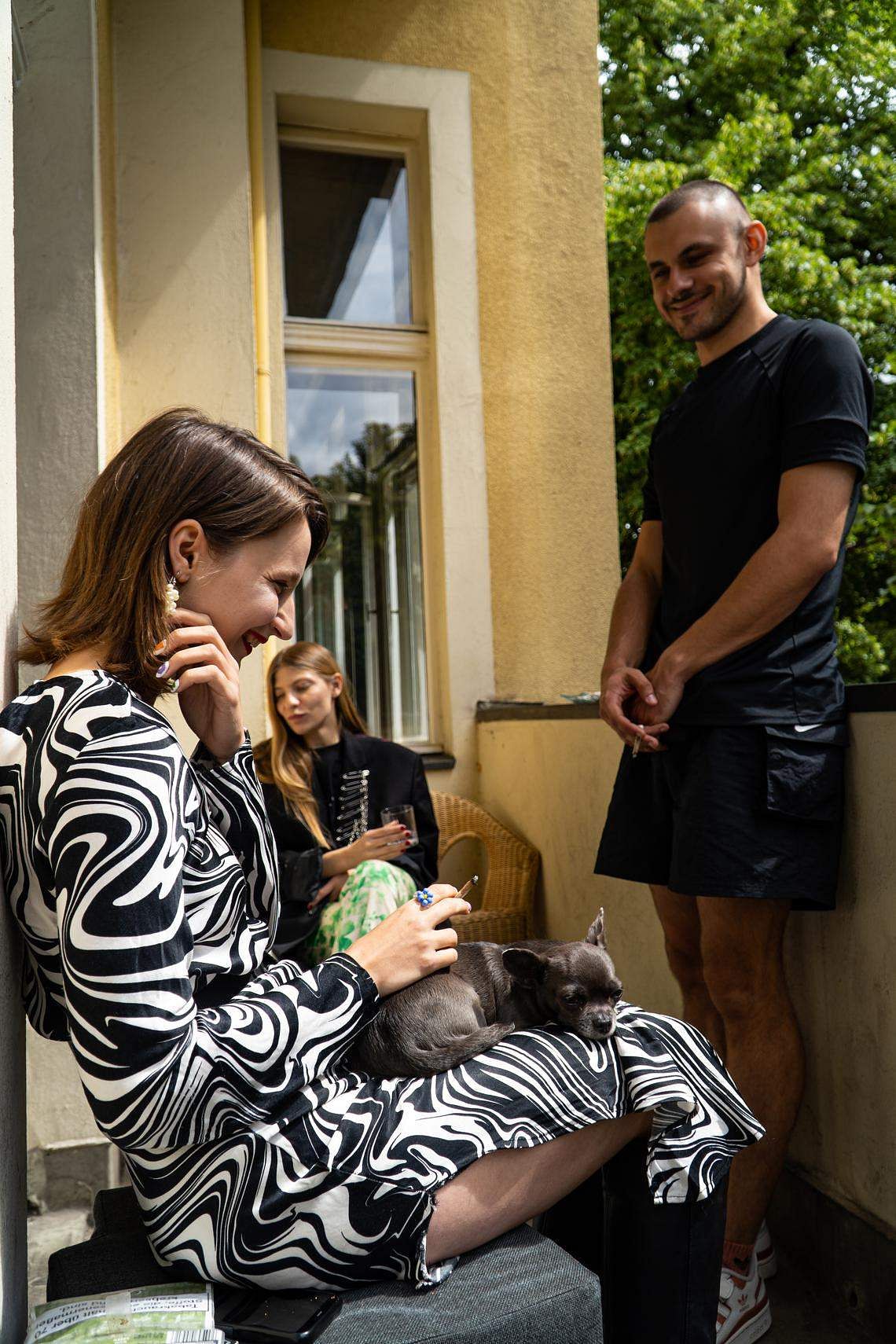
She sent her resume and residency proposal to the galleries in the German city, but their spots were already filled. Then the founder of Scope BLN, a similar artist-in-residence programme there, told her that a decommissoned brothel was up for rent.
Pasechnik arrived in Charlottenburg, a district in west Berlin on March 29, and rented the apartment immediately after viewing it even though it had no lights, windows or water.
An open call on Instagram for Ukrainian female and LGBT+ creatives drew more than 100 applicants. In the end, 19 were chosen for the one-year residency.
Tufting artist Viki Berg, who arrived in Germany in March and knew little German, was ready to work in a supermarket when she got the news she had been picked. The 29-year-old, who has a background in art management, says: “I had nothing but a small backpack. Now, I have all the instruments and materials to make carpets and do what I love most.”
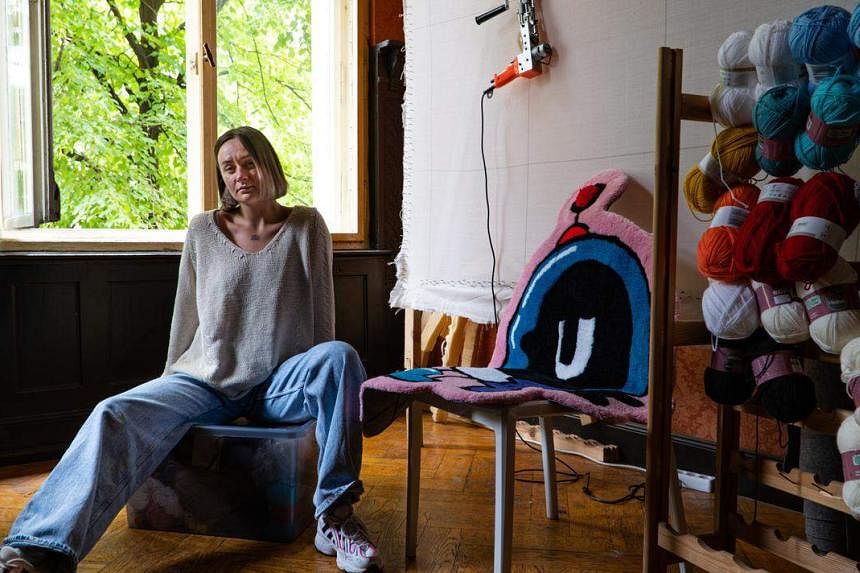
Although the rent of about $7,000 a month for the apartment is paid by the German government through the asylum process, the cheques are slow to arrive. But when the residency started in April, they received donations from non-profit organisation and networking club AusserGewohnlich Berlin.
The club is currently hosting an exhibition by some of the artists at its office premises and gallery in the Bikini Berlin mall.
Pasechnik has other plans to raise money, such as selling the artworks to collectors, setting up a bar in the apartment during exhibitions, and renting out rooms for private events and shoots – whatever it takes to keep the residency going.
“The war started a big wave of Ukrainians going to new cities, which lets us showcase our cultural heritage,” she says. “This is the perfect time for my country (to shine) and it is an honour to be Ukrainian.”
Fashion designers thrive at design hub
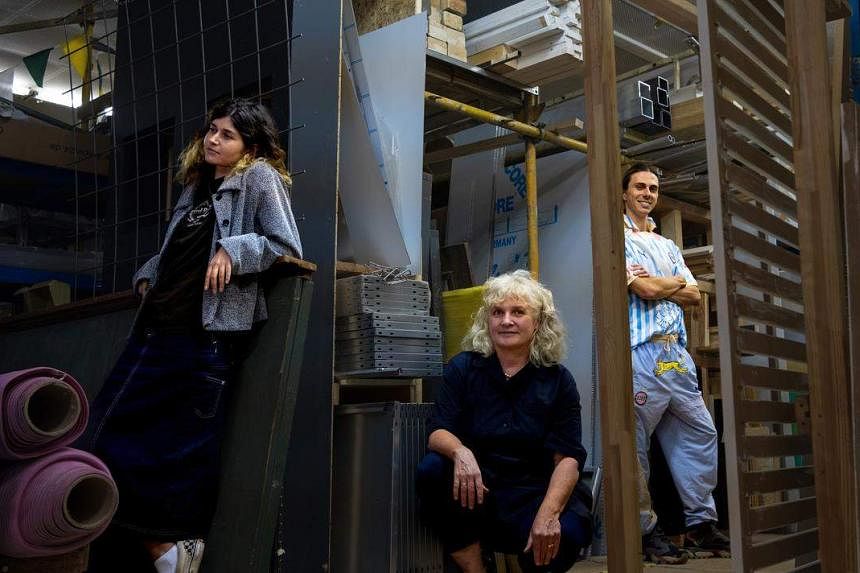
Alexandra Piskun, 30, was designing the next collection for her label Sheezen when Russia invaded Ukraine. With her mother and three dogs, she fled Kyiv to Romania, while her production team stayed behind.
After three weeks, when she realised the war had no end in sight, she travelled to Berlin alone in search of work.
She recounts: “It was my first day in the city, I had nothing, then I came across an Instagram post about Haus der Materialisierung, which was looking for designers to help out in the textile studio.”
Haus der Materialisierung is a non-profit association that develops local initiatives to support climate-friendly projects using recycled materials.
The next day, Piskun walked into the studio at Alexanderplatz, a square in central Berlin, and introduced herself to the programme developer Ana Lichtwer.
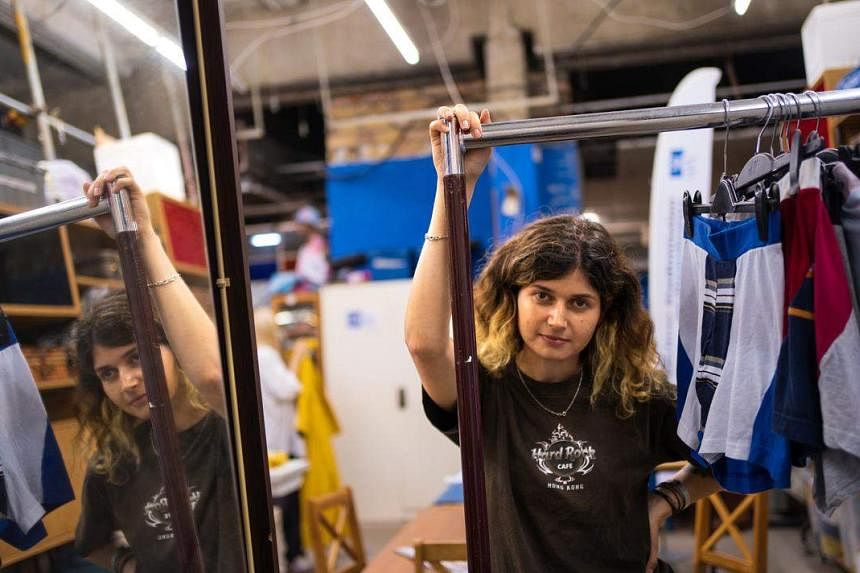
A few weeks later, the two women founded the Ukrainian Design Hub, which supports refugee designers and seamstresses with free access to professional sewing equipment and materials as well as collaboration opportunities with fashion industry experts.
Mrs Lichtwer, who is German, had come up with the idea after Berlin Fashion Week in March. The 55-year-old let a group of independent seamstresses use the studio to finish a collection of Jean Gritsfeldt, one of Ukraine’s biggest designers, who could not leave the country due to martial law.
The collection and its runway presentation, which preached peace, garnered rave reviews from European media outlets and fashion magazines and on social media.
Gritsfeldt, 33, says: “I was at an ATM in Kyiv when I received calls of support from Germany after the show. I was deeply touched and feel there are no borders between us now.”
Inspired by the show’s success, Mrs Lichtwer sought out Ukrainian refugee designers in Berlin so she could give them work. “We have professional machines. I wanted to make a space where designers can experiment, create collections and take the next steps without having to think about money.”
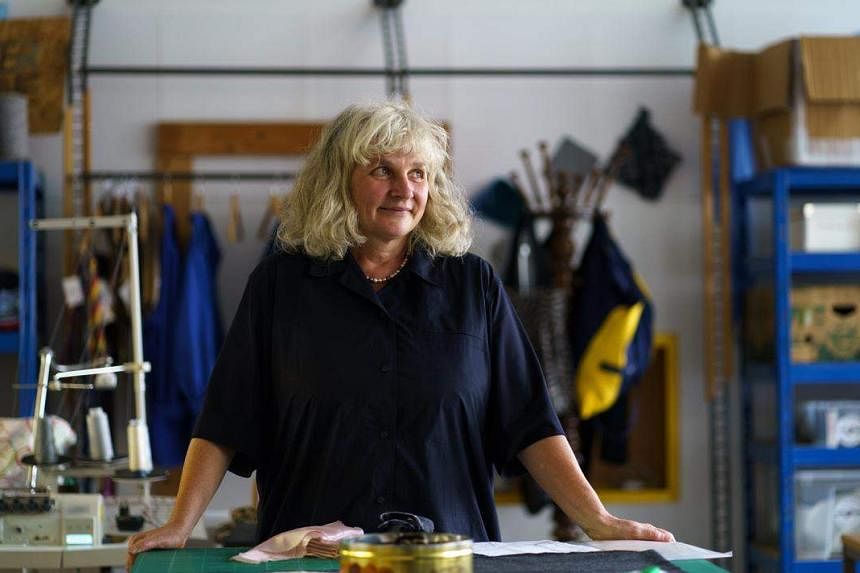
The textile studio sits in a one-storey warehouse with shelves, bins and rooms filled with recycled wood, scrap metal and donated clothing that can be reworked into new pieces of art. Mrs Lichtwer conducts tours on Tuesday and Wednesday afternoons to introduce new designers and seamstresses to the design hub.
Piskun says: “As a young designer, I don’t do much sewing, which is why the hub is good because I can bring my designs here and make them into clothes with the help of experienced seamstresses who are also from Ukraine.”
Her apparel that was made at the hub has been sold at concept stores such as Studio 183 in Bikini Berlin and Door NYC in the United States. A yellow coat was showcased at the Transilvania Fashion Festival in Romania on Sept 9 and will be featured again at Vegan Fashion Week in Los Angeles in October.
Mrs Lichtwer is currently working with Gritsfeldt – who can now travel outside Ukraine with permission from the Ministry of Culture and Information Policy – and Japanese apparel retailer Uniqlo to develop a masterclass at the Second Life Studio, a workshop at Uniqlo’s flagship store in Berlin where customers learn how to repair their damaged clothing.
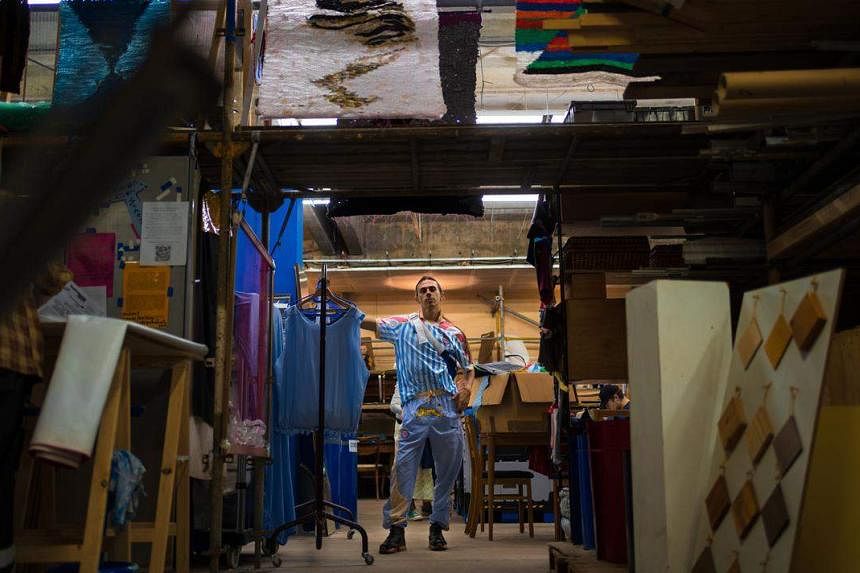
The class, slated to be held in autumn, will see Gritsfeldt teaching novice designers and his fans how to make patterns, sew and design their own clothes with upcycled materials.
Mrs Lichtwer hopes to eventually replicate the masterclass format at Uniqlo flagship stores around the world.
Gritsfeldt says: “Ukrainian have a lot of ideas and projects, but need financial support. Through the hub, I feel like the world is now open to us.”
Ballet dancer pirouette back to stage
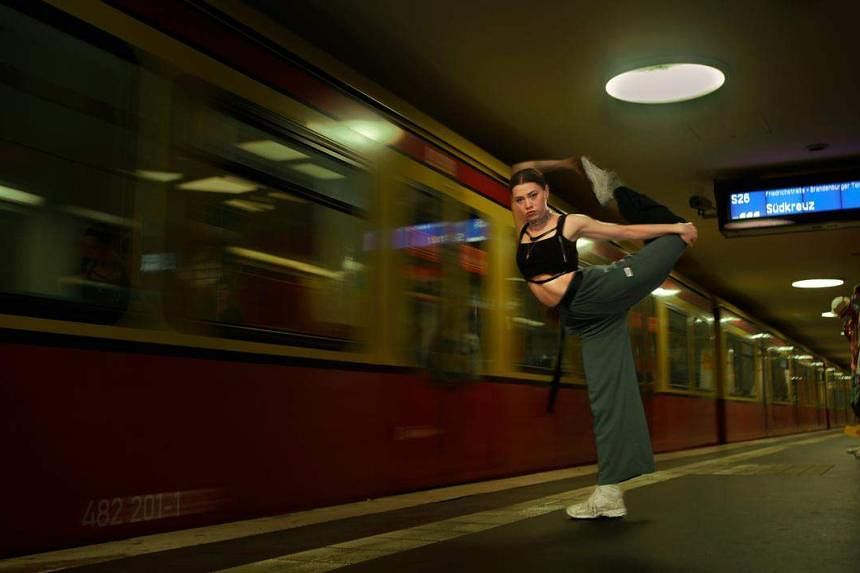
The night of Feb 23, ballet dancer Sasha Chetveryk took part in a dance battle at an underground studio in Kyiv. The next morning, the 20-year-old woke to the sounds of sirens.
The rest of the week was filled with uncertainty and confusion. But when Chetveryk saw neighbours vacate their homes with their belongings, it was clear she had to leave too.
With her mother, she spent the next few nights either in her car or an underground carpark. After several weeks, she hopped on a train bound for Berlin while her mother, a realtor, headed to Frankfurt and later got a job at a chicken factory.
“I was crying every night, I stopped dancing for a few months. It was awful,” says Chetveryk, a classically trained dancer.
So when Tanz+Blau+Gelb, a German-based project aimed at supporting Ukrainian dancers who fled the war, approached her to put on two solo performances at its gala, she was eager to get back in the studio. “It awakened in me the feeling that I must work, and I really missed that.”
Tanz+Blau+Gelb – which translates to blue and yellow in German, colours of the Ukrainian flag – is the brainchild of Hungarian dance artist Istvan Simon, 35. Based in the city of Dresden, it helps Ukrainian dancers get accommodation, free training and access to dance studios in Germany, as well as provide dance medicine consulting.
“We know when a dance artist is not able to perform or practise, it affects his or her mental health and mood,” says Simon, who is also the founder of Praetorian Non-Profit Art and Health Consulting, which helps dance artists deal with mental or physical health challenges.

He is in the midst of creating a dance company called Re/Sillience Dance for refugees of all nationalities. The members will be trained in trauma awareness.
In May, along with four other Ukrainian dancers, Chetveryk performed at the Gutersloh Theatre in the city of Gutersloh, a three-hour train ride from Berlin.
Choreographer Andreas Heise, 44, saw excitement among the dancers at being able to perform their craft again. “As dancers, when you don’t have your work, it’s almost like you get cut off from your identity. They were just so hungry to work.”
Chetveryk, who has applied to various dance companies in Berlin for choreographer roles, recalls: “I didn’t even look at the audience, I could only feel the emotions of my dance.”
She adds: “My dream is that, one day, I’ll become a very popular choreographer and work with celebrities.”
Brandon Chia and Tanisha Moghe are final-year communication studies students at the Nanyang Technological University’s Wee Kim Wee School of Communication and Information. Their reports on Ukrainian refugees are part of the school’s Go-Far overseas reporting programme.
